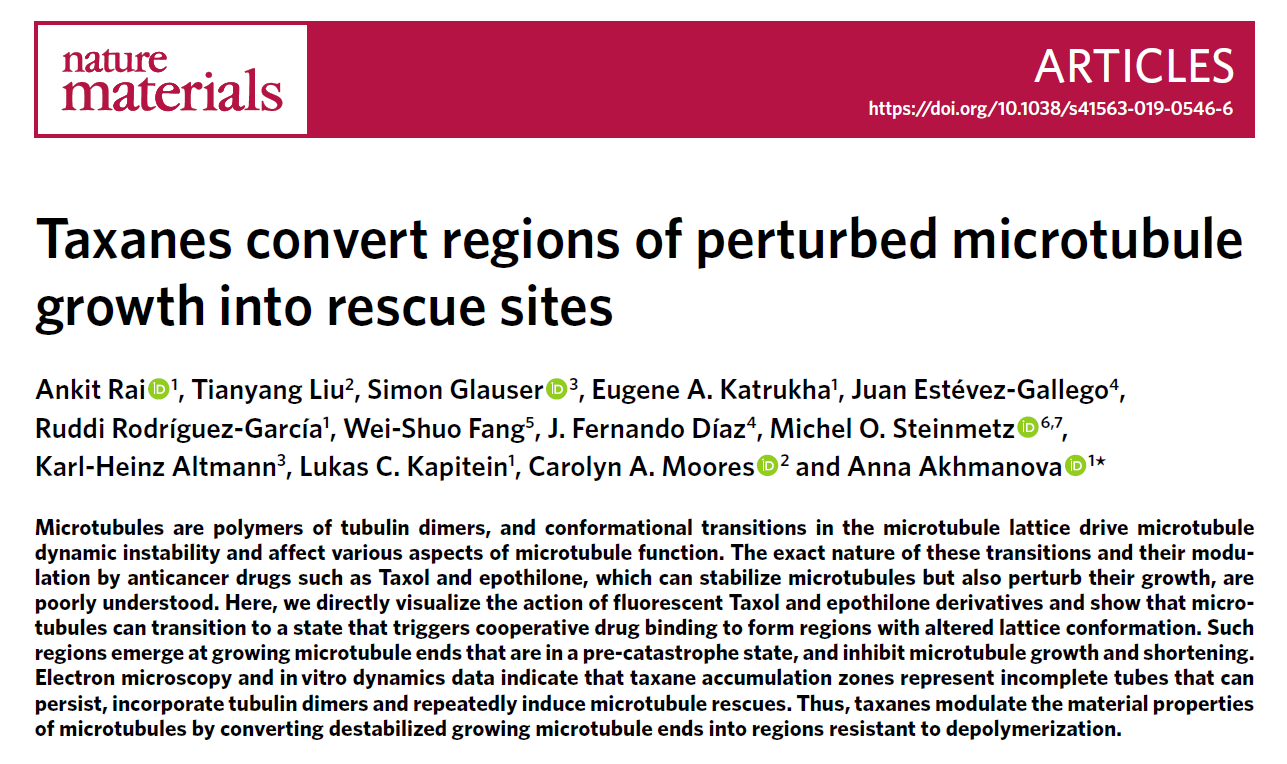Science News
Taxanes convert regions of perturbed microtubule growth into rescue sites
Apr 21, 2020 | News

Microtubules are polymers of tubulin dimers, and conformational transitions in the microtubule lattice drive microtubule
dynamic instability and affect various aspects of microtubule function. The exact nature of these transitions and their modulation
by anticancer drugs such as Taxol and epothilone, which can stabilize microtubules but also perturb their growth, are
poorly understood. Here, we directly visualize the action of fluorescent Taxol and epothilone derivatives and show that microtubules
can transition to a state that triggers cooperative drug binding to form regions with altered lattice conformation. Such
regions emerge at growing microtubule ends that are in a pre-catastrophe state, and inhibit microtubule growth and shortening.
Electron microscopy and in vitro dynamics data indicate that taxane accumulation zones represent incomplete tubes that can
persist, incorporate tubulin dimers and repeatedly induce microtubule rescues. Thus, taxanes modulate the material properties
of microtubules by converting destabilized growing microtubule ends into regions resistant to depolymerization.
https://doi.org/10.1038/s41563-019-0546-6
Written by tubinAD
